
ICAS Bulletin (online ISSN 2836-3418, print ISSN 2836-340X) is published every other week throughout the year at 1919 M St NW, Suite 310, Washington, DC 20036.
The online version of ICAS Bulletin can be found at chinaus-icas.org/bulletins/.
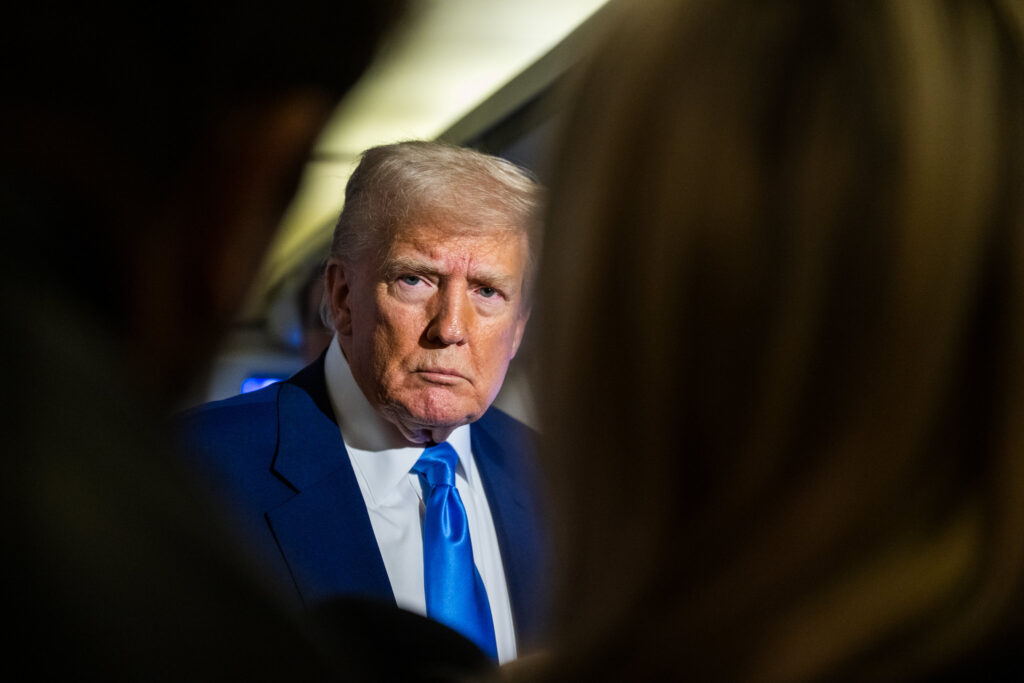
–On April 7, President Trump threatened 50% tariffs on China unless it dropped retaliatory duties, as global markets plunged and there were fears of an “economic nuclear winter.”
– Markets plunged on April 4, with the S&P 500 down 6% and the Dow dropping over 2,200 points after China retaliated against Trump’s new tariffs, deepening fears of a global recession.
– On April 2, President Trump announced sweeping new tariffs—including a 10% baseline on nearly all imports and “reciprocal” rates up to 34% on countries like China—in a move widely expected to trigger a trade war and raise prices for American consumers.
– U.S. manufacturing activity slipped back into contraction as cost pressures, tariff-related uncertainties, and weakening demand—amid confusion over the Trump administration’s trade policy—prompted companies to scale back production and hiring.
– On March 31, Goldman Sachs raised its U.S. recession risk to the highest level since the 2023 banking crisis, citing collapsing consumer confidence and Trump’s escalating trade war.
– On March 31, President Trump announced he had finalized a new “Liberation Day” tariff plan but withheld specifics.
– Recently, reports show that, amid rising U.S. tariffs and pressure from American buyers for 10% price cuts, more manufacturers are exiting China as shrinking profit margins make continued operations unsustainable.
– On March 27, President Trump announced a 25% tariff on all imported cars and parts—effective April 3—in a major escalation of the trade war aimed at boosting U.S. auto manufacturing. This sparked warnings of rising car prices and industry disruption across North America.
Associated News References:
“Trump threatens new 50% tariffs on China if Beijing doesn’t remove retaliatory duties,” CNBC, April 7
“Trump tariffs: Dow drops 1,300 after China retaliates,” AP News, April 4
“Trump announces reciprocal tariffs on dozens of nations and sweeping 10% tariff ,” NPR, April 2
“U.S. Factory Activity Retreated in March on Tariff Concerns,” The Wall Street Journal, April 1
“Recession odds are rising as Trump’s trade war escalates, Goldman Sachs says,” CNN Business, March 31
“Trump Says He Settled on ‘Liberation Day’ Tariff Plan but Doesn’t Reveal It,” The Wall Street Journal, March 31
“For China and US Inc, Trump’s trade war feels much worse this time,” Reuters, March 31
“Trump announces new auto tariffs in a major trade war escalation,” CNN Business, March 27
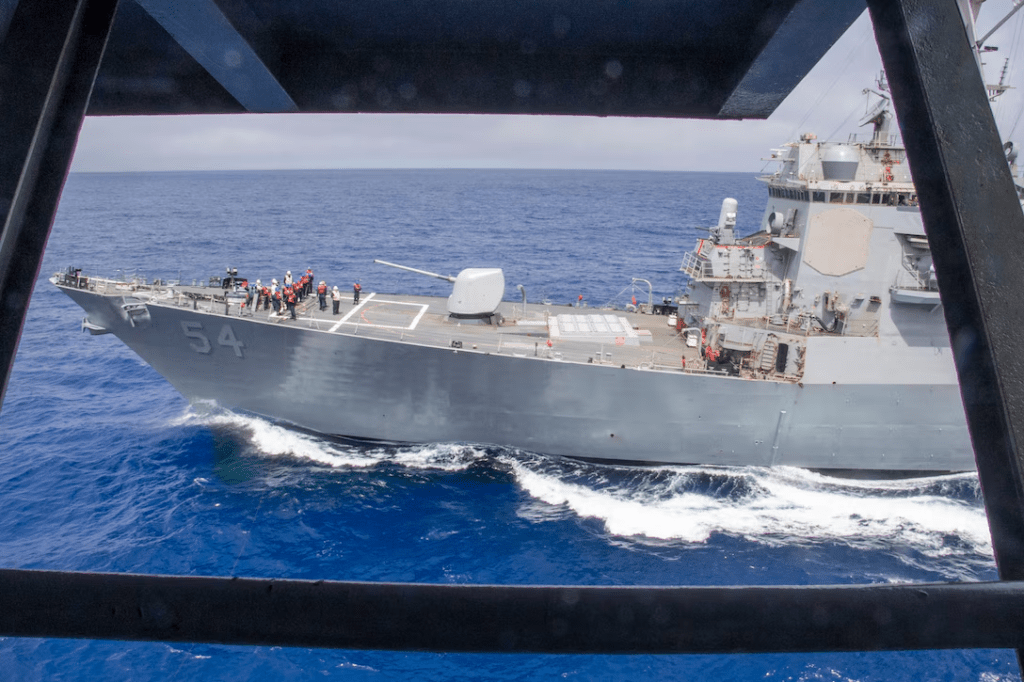
– On April 4, China demanded compensation from Taiwan after a Taiwanese navy ship collided with a Chinese fishing boat outside restricted waters near the Taiwan Strait on March 27.
– On April 4, Taiwan strongly condemned the U.S. decision under President Trump to impose a 32% tariff on its imports—excluding semiconductors—as part of sweeping “reciprocal tariffs,” calling it unfair despite Taiwan’s major investments in U.S. chip manufacturing.
– On April 1, China launched major military drills involving an aircraft carrier battle group around Taiwan as a “severe warning” against independence, prompting sharp condemnation from Taipei and escalating regional tensions amid growing U.S.-Japan security cooperation.
– On March 31, a Heritage Foundation report warned that the U.S. lacks modern tactical nuclear weapons to effectively deter or respond to a potential Chinese attack in the Indo-Pacific, highlighting concerns that China’s use of such weapons could shift the balance in a Taiwan conflict.
– On March 31, Taiwan leader Lai Ching-te convened senior officials to assess the potential impact of upcoming U.S. tariffs, as the Trump administration signaled that its reciprocal tariff measures would target 15 countries with the largest trade surpluses with the United States.
– On March 30, U.S. Defense Secretary Pete Hegseth concluded his first Asia tour by assuring Japan of stronger military cooperation, including plans to accelerate a new joint command in Tokyo and expand joint exercises near Taiwan.
Associated News References:
“China demands compensation from Taiwan after collision of navy ship, trawler,” Reuters, April 4
“Trump’s 32% tariff on Taiwanese imports stuns Taipei: ‘deeply unreasonable’,” South China Morning Post, April 4
“China holds major war games around Taiwan as U.S. boosts ties with Japan to deter ‘Chinese military aggression’,” CBC News, April 1
“The US is not ready for a nuclear showdown with China, key conservatives warn Trump,” Fox News, March 31
“Taiwan president briefed ahead of possible US tariffs,” Reuters, March 31
“Hegseth Pledges to Step Up Military Cooperation With Japan and Deter China,” The New York Times, March 30
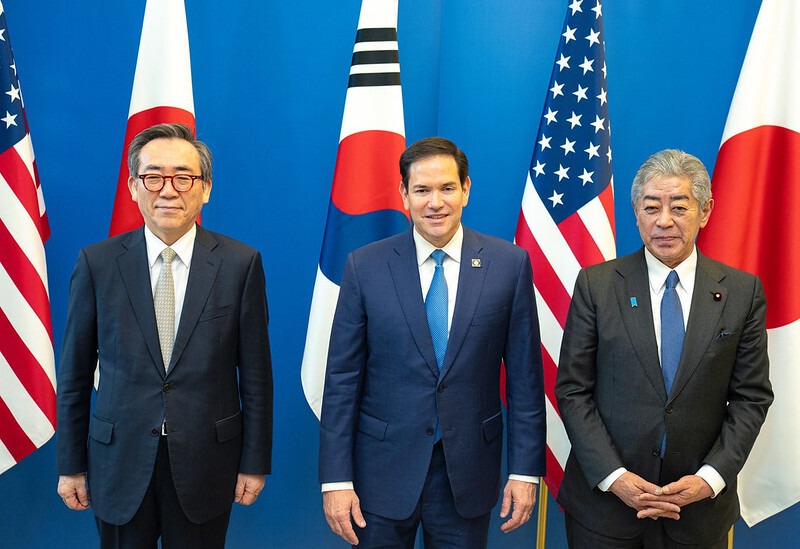
– On April 4, 2025, China accused the Philippines of running a spy network and arrested three alleged Filipino spies, escalating diplomatic tensions and prompting concerns over potential economic fallout and reduced Chinese investment in the Philippines.
– President Xi Jinping will visit Vietnam, Malaysia, and Cambodia on his first overseas trip this year, likely starting in mid-April. Beijing seeks to strengthen ties with regional partners amid the US-China trade war, with Vietnam and Malaysia exposed to higher tariffs.
– On March 29, China’s PLA condemned joint drills by the Philippines, U.S., and Japan in the South China Sea, declaring its forces would remain on high alert to defend national sovereignty, as its Southern Theatre Command conducted a routine patrol.
– On March 28, U.S. Air Force Secretary nominee Troy Meink told the Senate that deterring China’s potential aggression in the Taiwan Strait requires a comprehensive strategy to develop and integrate advanced unmanned systems into broader military capabilities.
– On March 28, U.S. Defense Secretary Pete Hegseth announced the deployment of advanced missile and unmanned systems to the Philippines for joint exercises, explicitly framing “communist China” as a regional threat.
– On March 26, the potential second deployment of the U.S.-made Typhon missile system to the Philippines was welcomed by Manila as a boost to military readiness and a signal of Washington’s firm defense commitment.
Associated News References:
“South China Sea: mounting China-Philippine spy cases risk rattling economic relations,” South China Morning Post, April 4
“Xi to Visit Vietnam, Malaysia, Cambodia in April, SCMP Says,” Bloomberg, March 31
“PLA ‘on high alert’ in South China Sea, warns Manila over naval drills with US, Japan,” South China Morning Post, March 29
“Air force nominee wants total drones approach to counter Mainland China,” South China Morning Post, March 28
“Trump’s defence chief says US, Manila must stand ‘shoulder to shoulder’ to deter China threat,” South China Morning Post, March 28
“Philippines set to host second Typhon missile system, signalling Trump’s defence pledge,” South China Morning Post, March 26
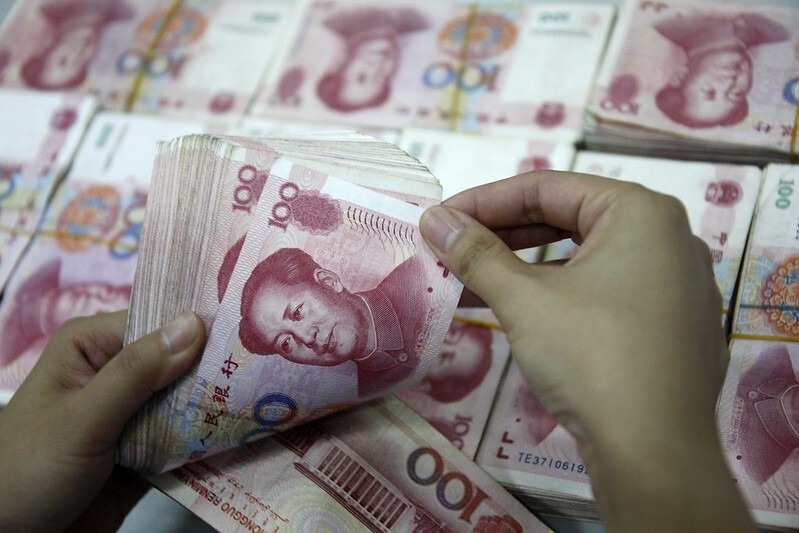
– On April 4, China announced 34% retaliatory tariffs on all U.S. imports, export controls, and sanctions on U.S. firms.
– On April 1, China nominated former vice-finance minister Zou Jiayi to succeed Jin Liqun as president of the Asian Infrastructure Investment Bank, with elections set for late June in Beijing.
– On March 31, Chinese state media claimed that China, Japan, and South Korea had agreed to jointly respond to U.S. tariffs during their first economic dialogue in five years, though South Korea called the claim “somewhat exaggerated” and Japan denied any such discussion occurred.
– In March, China’s official manufacturing PMI rose to 50.5—its highest in a year—while non-manufacturing activity climbed to 50.8, signaling strengthened domestic demand and a boost from foreign order frontloading.
– On March 31, Huawei reported a 22.4% surge in 2024 revenue to 862.1 billion yuan, driven by strong rebounds in its consumer and telecom businesses, despite a 28% drop in net profit due to rising R&D investments and continued pressure from U.S. sanctions.
– On March 31, Hong Kong’s Hang Seng Tech Index fell over 3%, entering correction territory with a 12% drop since March 18, as investors took profits amid renewed U.S.-China trade tensions over tech access restrictions.
– On March 28, Chinese President Xi Jinping met with top global executives in Beijing, urging them to help “uphold global order” and reaffirming China as a safe, stable investment destination.
– On March 27, China signaled a strategic pivot toward the Global South at the Boao Forum, seeking to reduce economic reliance on the U.S. amid rising tariffs by emphasizing regional trade partnerships with Global South countries and boosting domestic demand.
Associated News References:
“China imposes 34% reciprocal tariffs on imports of US goods in retaliation for Trump’s trade war,” CNN Business, April 4
“China nominates Zou Jiayi to be the next president of the AIIB,” South China Morning Post, April 1
“China, Japan, South Korea will jointly respond to US tariffs, Chinese state media says,” Reuters, April 1
“China’s manufacturing hits 12-month high, driven by strong orders,” Reuters, March 31
“Huawei 2024 revenue surges to near-record high as China smartphone comeback takes hold,” CNBC, March 31
“Hang Seng tech index slides into correction territory after strong rally as tariff worries sour mood,” CNBC, March 31
“China’s Xi calls on top executives to help ‘uphold global order’ as trade tensions with U.S. rise,” CNBC, March 31
“China looks south as it seeks to reduce reliance on a capricious United States,” The Guardian, March 27

– On April 1, the U.S. imposed sanctions on six Chinese officials, including Hong Kong’s police commissioner and justice secretary, over human-rights abuses in Hong Kong and Tibet, marking the Trump administration’s first human-rights-focused action on China.
– On April 1, Secretary of State Marco Rubio ordered U.S. diplomats to scrutinize the social media of certain student and exchange visa applicants, aiming to block entry for those suspected of criticizing the U.S. or Israel.
– On April 1, the U.S. imposed sanctions on six entities and two individuals in Iran, the UAE, and China for allegedly participating in an Iranian weapons procurement network, as President Trump intensified pressure on Tehran.
– On April 1, Beijing vowed retaliation after the U.S. sanctioned six Hong Kong officials over transnational repression, with both China’s foreign ministry and the Hong Kong government condemning the move.
– On March 31, Wang Yi visited Russia to strengthen strategic ties, welcomed steps by Russia and the U.S. to normalize relations, and expressed China’s willingness to help resolve the Ukraine conflict.
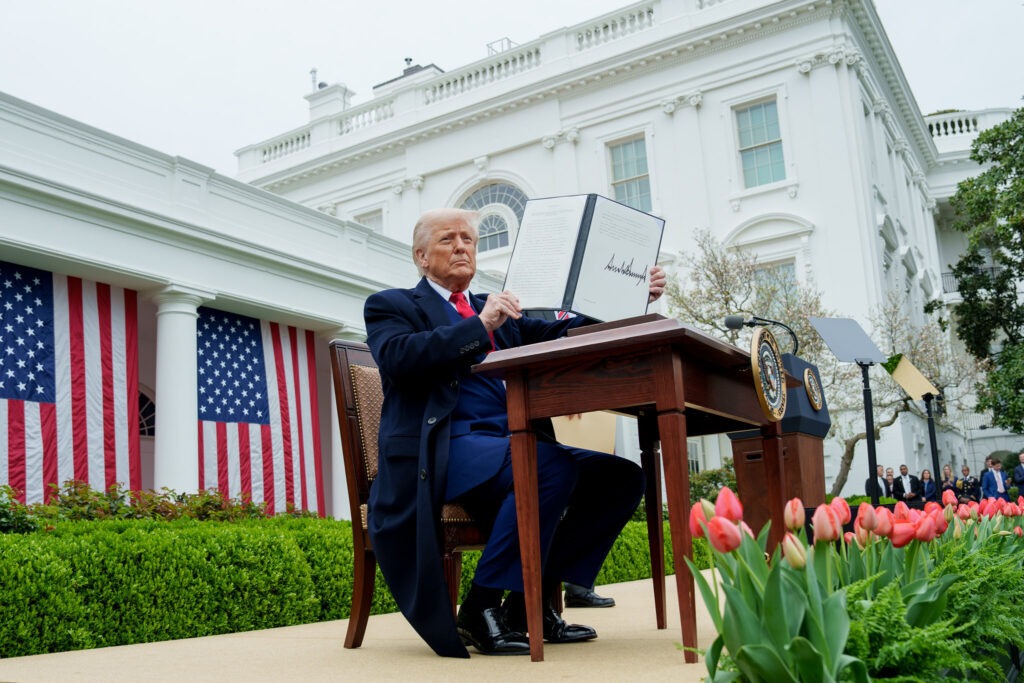
“Trump’s pick for Joint Chiefs chairman vows to be apolitical and addresses Signal chat,” AP News, April 1
“NSC confirms Mike Waltz and staff used Gmail for government communication,” Fox News, April 1
“White House closes case on Signal and stands by Waltz, with key questions still unanswered,” CNN Politics, March 31
“Mike Waltz Is Losing Support Inside the White House,” The Wall Street Journal, March 30
“It’s the world’s hottest car company. You can’t buy one in America,” CNN, March 26
“China’s artificial intelligence boom might help mitigate some tariff pain,” CNBC, March 26
The Black Sea Chessboard: US, Russia, and Ukraine in a High-Stakes Gambit
By Nong Hong
April 4, 2025
On March 26, 2025, the United States brokered separate agreements with Ukraine and Russia to cease maritime attacks in the Black Sea and halt assaults on energy targets. As part of the deal, the U.S. agreed to assist Russia in lifting certain sanctions related to agricultural and fertilizer exports. However, Russia has stipulated that its commitment to the maritime ceasefire is contingent upon the lifting of certain U.S. sanctions, particularly those affecting its agricultural exports and access to payment systems. Ukrainian President Zelensky, however, remains doubtful about loosening sanctions on Russia, questioning Moscow’s genuine commitment to peace.
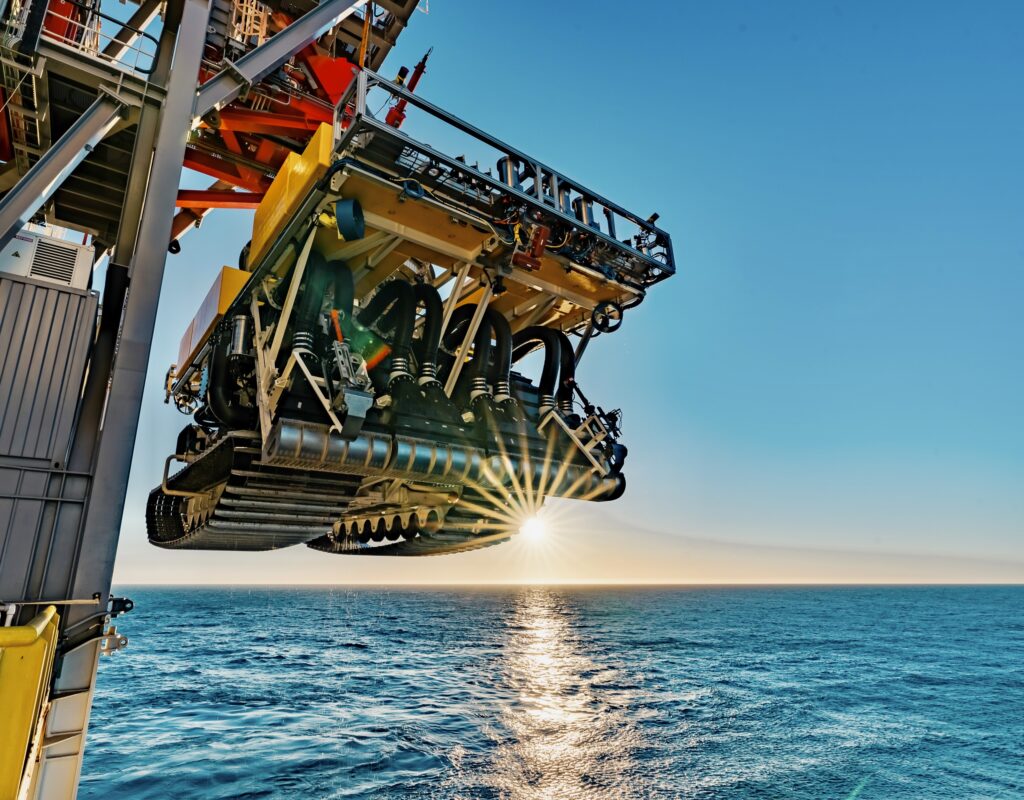
Moratoriums vs. Mining: How ISA’s 30th Session Wrestled With Environmental Thresholds, Profit Sharing, and the Rush to Regulate
By Nong Hong
April 4, 2025
Part I of the 30th Session of the International Seabed Authority (ISA), was concluded on March 28 2025, marked significant developments in the ongoing effort to establish regulations for the exploitation of mineral resources in international seabed areas. As the governing body responsible for overseeing deep-sea mining under the United Nations Convention on the Law of the Sea (UNCLOS), the ISA is tasked with balancing resource extraction, environmental protection, and the equitable sharing of benefits among nations. This session, attended by all 36 Council Members, 24 non-Council Members, and 26 observer delegations, featured critical discussions and negotiations that are shaping the future of seabed mining. However, it also highlighted the complex challenges and divergent interests among member states and other stakeholders.
On Monday, April 7, 2025, Senior Fellow Sourabh Gupta was interviewed in CGTN discussing how China responds to the Trump tariff offensive.
On Monday, April 7, 2025, Senior Fellow Sourabh Gupta was quoted in China Daily discussing why the Trump tariff violates WTO rules and is ineffective for the US.
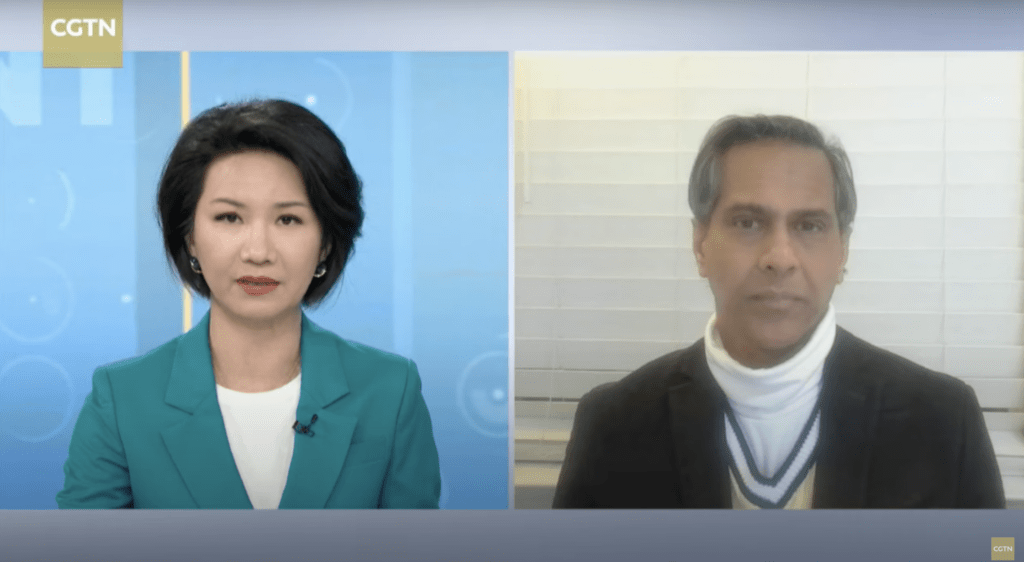
The Institute for China-America Studies is an independent nonprofit, nonpartisan research organization dedicated to strengthening the understanding of U.S.-China relations through expert analysis and practical policy solutions.
1919 M St. NW Suite 310,
Washington, DC 20036
icas@chinaus-icas.org
(202) 968-0595
© 2025 INSTITUTE FOR CHINA-AMERICA STUDIES. ALL RIGHTS RESERVED.